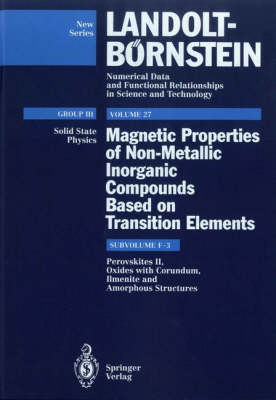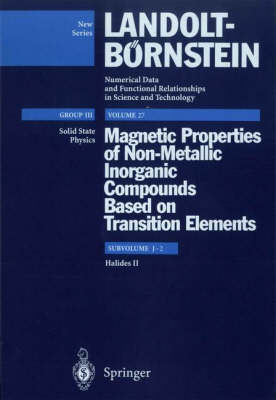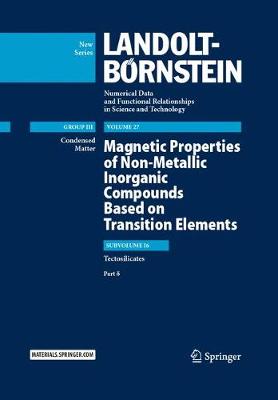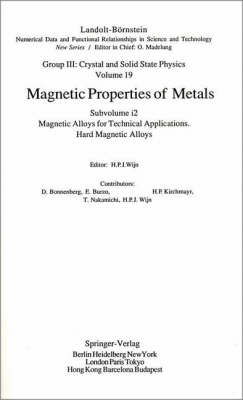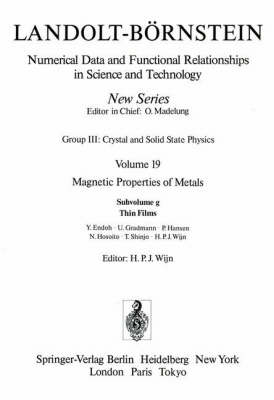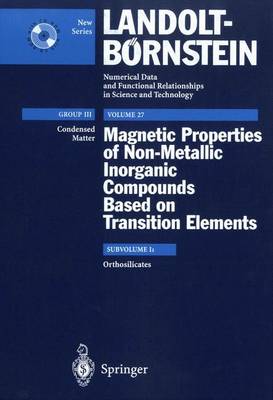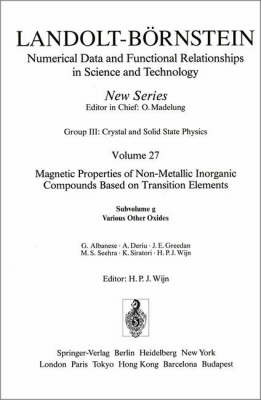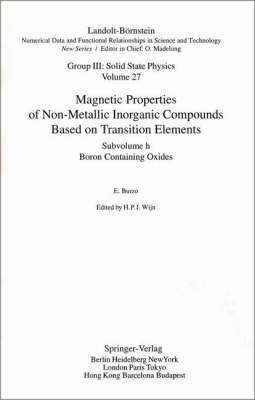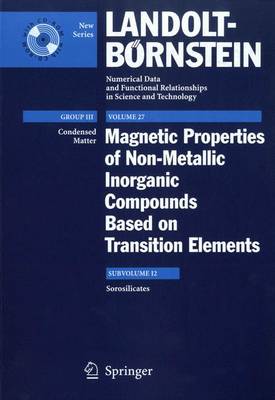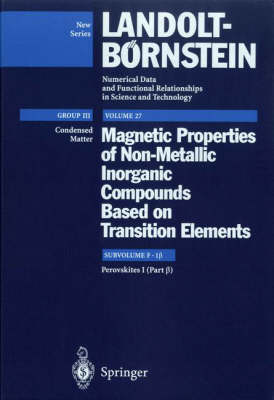Landolt-Boernstein: Numerical Data and Functional Relationships in Science and Technology - New
11 total works
27F3
Perovskites II, Oxides with Corundum, Ilmenite and Amorphous Structures
by Y. Endoh, K. Kakurai, A.K. Katori, M.S. Seehra, G. Srinivasan, and H P J Wijn
27J2
27I6
Magnetic Properties of Non-Metallic Inorganic Compounds Based on Transition Elements
by E. Burzo
19i2
Hard Magnetic Alloys
by D. Bonnenberg, E. Burzo, K. Fukamichi, H.P. Kirchmayr, T. Nakamichi, and H P J Wijn
19g
Thin Films / Dünne Filme
by Y. Endoh, U. Gradmann, P. Hansen, N. Hosoito, T. Shinjo, and H P J Wijn
27I1
The magnetic properties of silicates are compiled in subvolume 27I. Silicates are very complex systems, covering large classes of minerals as well as synthetic samples. Individual chapters are dedicated to orthosilicates, sorosilicates, cyclosilicates, inosilicates, phyllosilicates and tectosilicates. Due to the huge amount of data these chapters have to be spread over several subvolumes I1, I2, etc.. - The present subvolume 27I1 deals with orthosilicates. The different groups of minerals and synthetic silicates were distinctly analyzed in various sections, presenting data on crystal structure, magnetic properties (such as magnetizations, susceptibilities, ordering temperatures), nuclear gamma resonance, nuclear magnetic resonance, transport properties, thermal properties, as well as dielectric and optical data.
27G
Various Other Oxides / Verschiedene andere Oxide
by G. Albanese, A. Deriu, John E. Greedan, M.S. Seehra, K. Siratori, and H P J Wijn
27H
Book 19e2
27I2
The magnetic properties of silicates and phosphates are compiled in subvolume 27I. While subvolume 27I1 (already published) deals with orthosilicates, the present subvolume 27I2 deals with sorosilicates. Further subvolumes are dedicated to other types of silicates (cyclosilicates, inosilicates, phyllosilicates, tectosilicates) and to phosphates. - Silicates are very complex systems, covering large classes of minerals as well as synthetic samples. Their crystal structure is discussed and atomic positions are given. In addition to magnetic properties, results of neutron diffraction studies, nuclear gamma resonance, nuclear magnetic resonance, transport properties, dielectric and optical data are reviewed.
27F1b
